TR1010D high-voltage differential probes are suitable for all major oscilloscopes in the market, converting floating signals to low-voltage signals at the ground level, making it safe and easy to display any reference ground level oscilloscope. The probe can be used at frequencies up to 100MHz for 7000V voltages and has high common-mode rejection, making it an excellent choice for non-georeferenced, floating, or isolated measurements.Angstrom oscilloscope differential probes are ideal for power testing, switching power supplies, inverters, motor drive control, switching power supply development, maintenance and evaluation.
Features:
• Safe floating measurements
• No damage to the oscilloscope and device under test
• Strong anti-interference ability
• Audible and visual alarm function
• 5MHz bandwidth limit function selection
• Good common-mode noise rejection
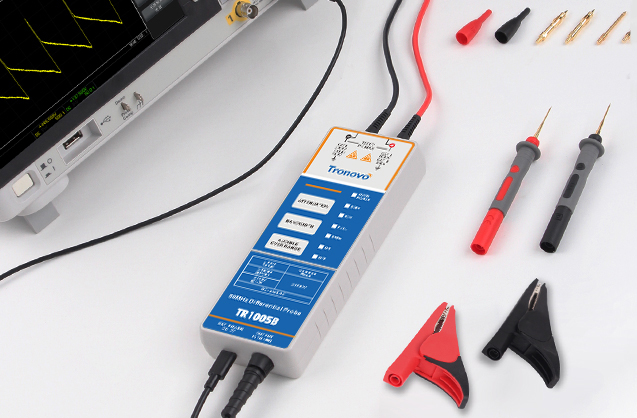 |
High performance differential probe50mVrms ultra-low noise and 2% accuracy allow BNC differential probes to accurately analyze uA sensor signals. Hall effect technology combined with differential amplification can directly measure the micro voltage difference of strain gauge, which is suitable for low power verification of medical ECG equipment and industrial automation control system. |
Measuring advantagesThe differential probe realizes high impedance isolation between the signal end and the oscilloscope ≥ 1MΩ, directly measures the 4000V floating system in the development of cardiac defibrillator, and accurately captures the defibrillation pulse waveform with 80dB common mode rejection ratio, thus completely isolating the risk of electric shock to medical staff. The probe has passed IEC 61010 medical safety certification, meeting the insulation requirements of BF type equipment, ensuring zero missed diagnosis of defibrillation energy analysis. |
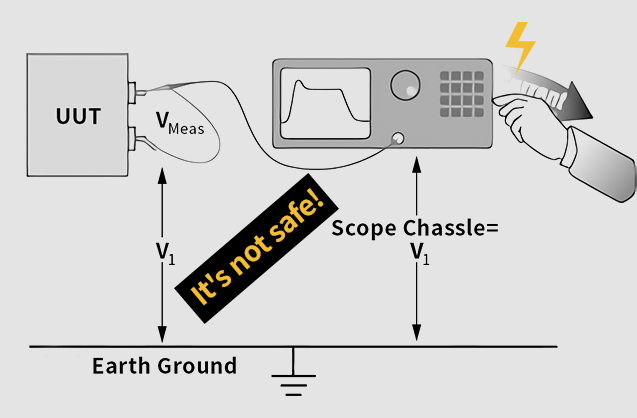 |
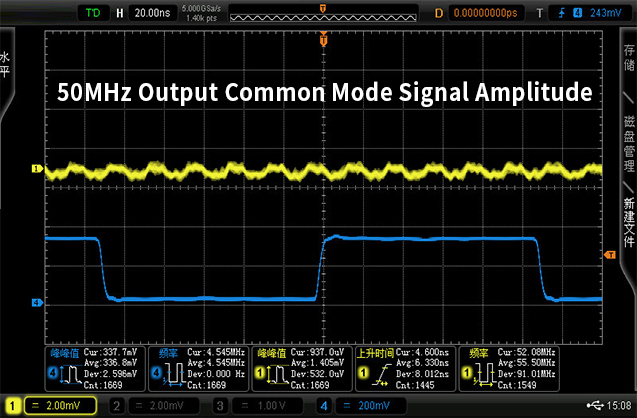 |
CMRR Common Mode Rejection CapabilityWhen measuring GaN/SiC half-bridge circuit with sub-probe, 80dB ultra-high common mode rejection ratio can compress 500V common mode voltage to mV level interference, and accurately capture Vgs drive details with 5ns dead time. The probe supports 100V/ns ultra-fast dV/dt change, and the aluminum nitride ceramic isolation medium withstands the double pulse test of 1700V silicon carbide devices, ensuring zero distortion in the loss analysis of the third generation semiconductor switch. |
low voltage power supplyThrough the oscilloscope built-in USB interface or external 5V power adapter power supply, using Type-C interface to achieve positive and negative blind plug, support plug and play function. Can provide up to 2A stable current, built-in overvoltage/overcurrent protection circuit. The Type-C cable is widely compatible with existing digital equipment, and the mobile phone charging cable can be directly borrowed to achieve rapid deployment in the laboratory environment. |
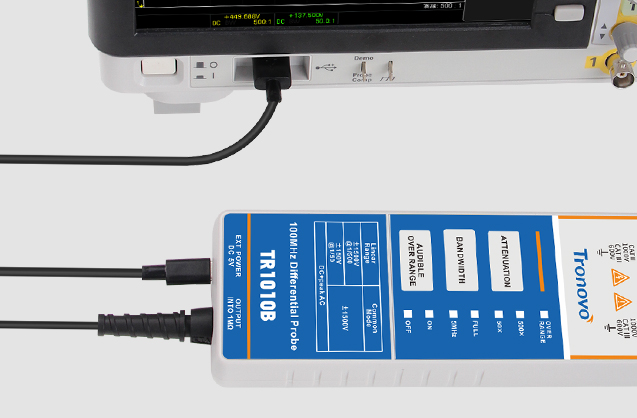 |
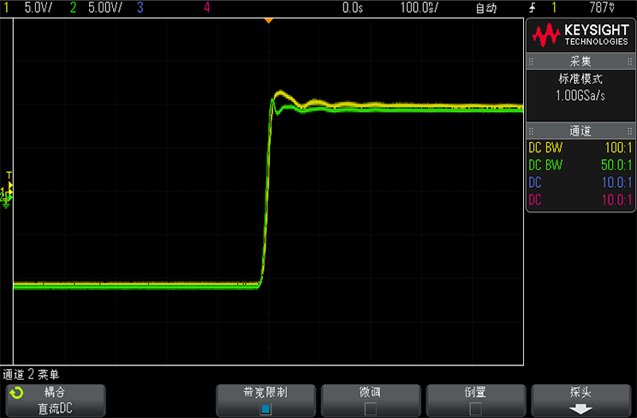 |
pulse signal measurementWhen comparing the rising edge responses of different probes, it is found that the waveform of the contrast probe has obvious ringing phenomenon. This phenomenon is mainly caused by insufficient probe bandwidth or transmission line impedance mismatch, and high-speed signals produce reflection superposition in the probe-oscilloscope path. It is recommended to use an active differential probe with a bandwidth ≥ 3 times the signal frequency to ensure that the input impedance is ≥ 1MΩ, which can effectively suppress ringing. With the oscilloscope 20MHz bandwidth limit function, can further optimize the signal integrity, so that the rise time measurement error <5%, in line with the IEEE1155 standard requirements. |
| Model | TR1010D |
| Bandwidth (-3dB) | 100MHz |
| Rise time | ≤3.5ns |
| precision | ±2% |
| Range selection (attenuation ratio) | 100X/1000X |
| Maximum differential measurement voltage | 100X:±700V DC+ Peak AC 1000X:±7000V DC+ Peak AC |
| Common-mode voltage | ±7000V DC + Peak AC |
| Maximum input voltage to ground | 600VCATⅢ 2300VCATⅡ Vrms |
| Input impedance | Single-ended to ground: 20MΩ±1% Between Inputs: 40MΩ±1% |
| Input capacitance | Single-ended to ground: <5pF Between the two inputs:<2.5pF |
| CMRR | DC: >80dB 100KHz: >60dB 1MHz: >50dB 3.2MHz: >30dB 50MHz: >26dB |
| Noise level | 100X: <200mVrms 1000V: <1.2Vrms |
| Overload indication voltage threshold | 100X: ≥700V 1000X: ≥7000V |
| Bandwidth limit (5MHz) long | ≥-3dB@5MHz |
| Overload indicator | Yes (red light) |
| Overload alarm sound | Yes (optionally closed) |
| Auto-save function | Yes |
| Offset adjustable function | Yes (adjusted in test mode) |
| Terminal load requirements | ≥100kΩ |
| power supply | USB 5V/1A adapter |
| Safety meets standards | EN61010-1:2010 |
| EMC is compliant | EN61326-1:2013 EN61000-3-3:2013 |
There are currently no application cases available
There are currently no films available